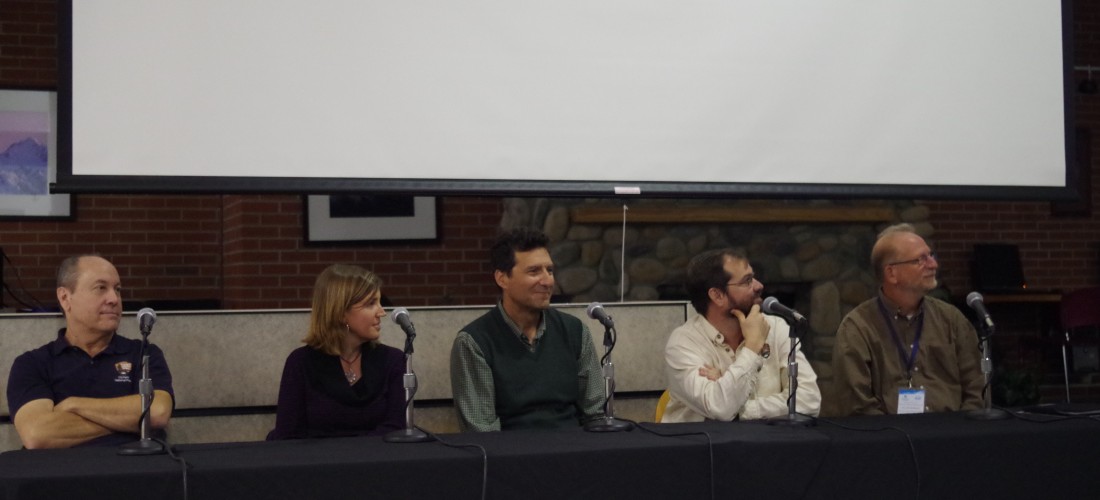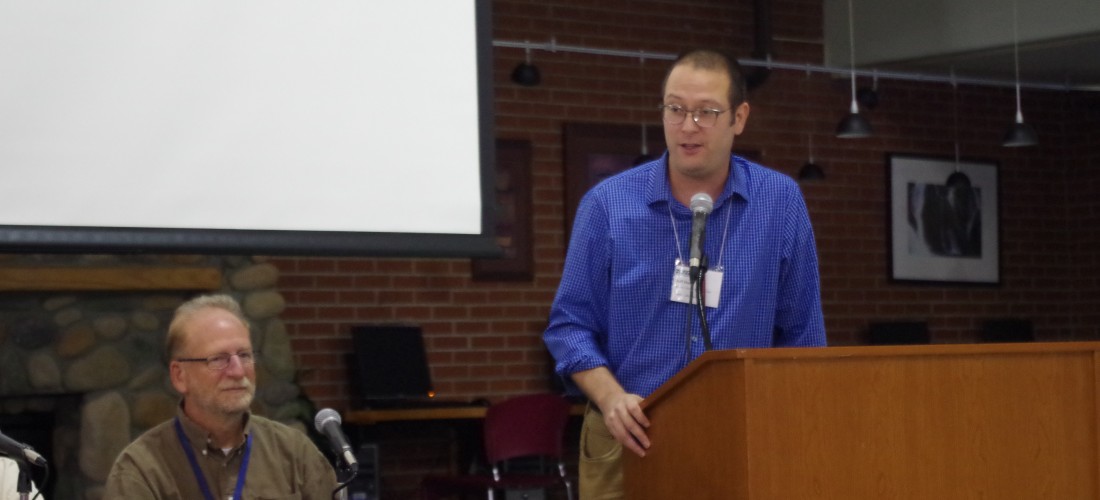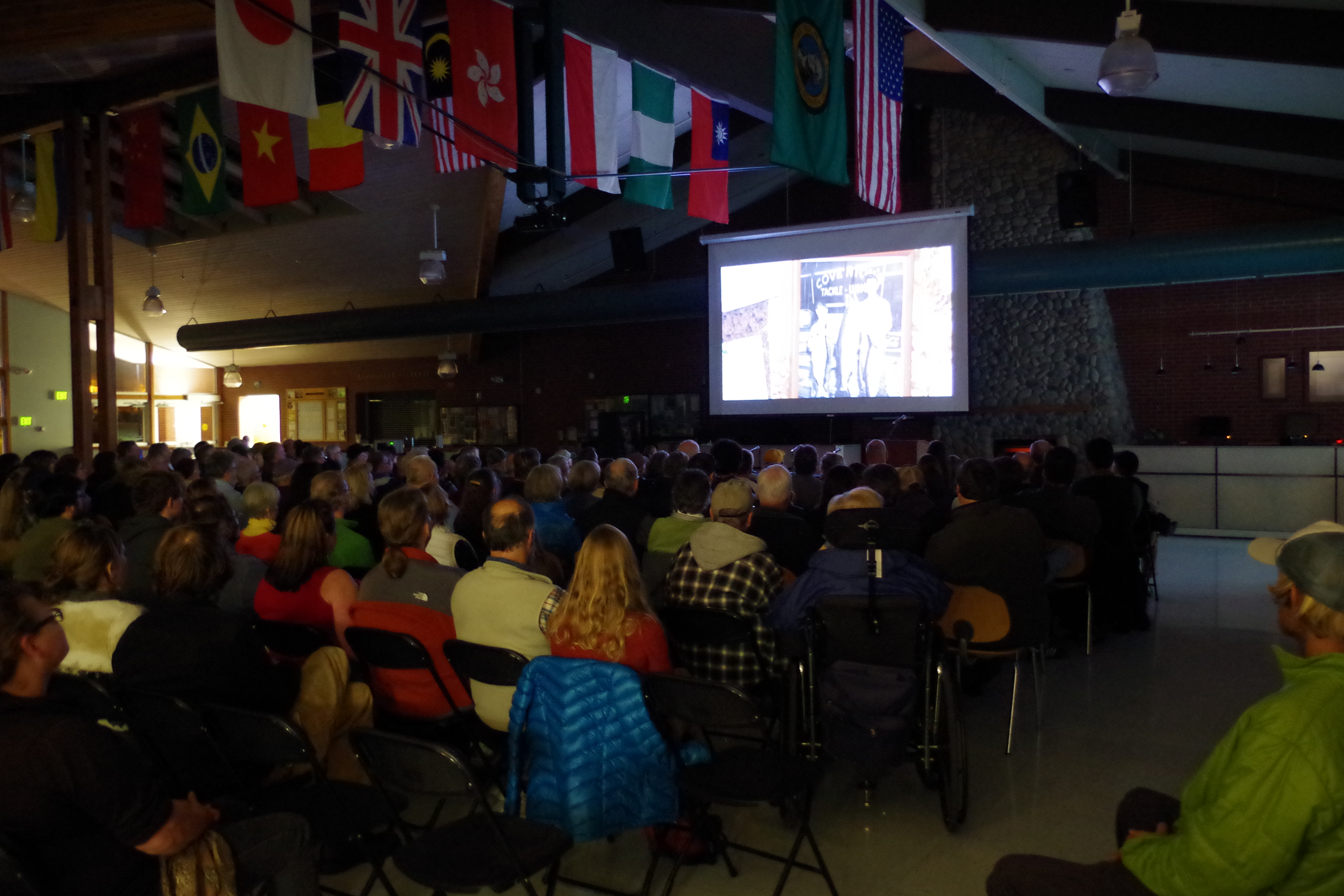
By Giovanni Roverso
Researchers stood along the walls of the Pirate Union Building in front of large printed sheets detailing their latest results in ecosystem restoration at the public event for this year’s Elwha River Science Symposium on Nov. 19.
The public was seated for next part of the event. Jessica Plumb and John Gussman’s film about the dam removal, “Return of the River,” was shown on a big projector, after which a panel discussed the latest research findings and developments, followed by a Q&A session.
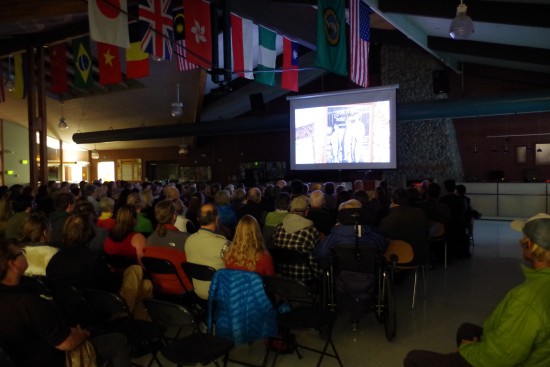
The symposium was the first since all work on the dams ceased on Aug. 26, 2014, when the final piece of concrete was removed from the river.
Researchers associated with the Elwha dam removal and restoration projects get together every other year at Olympic NatureBridge at Lake Crescent for the symposia and come to the college as their “commitment to share information be- yond the scientific community,” according to Barbara Blackie, Peninsula College biology instructor on the symposium planning committee.
Ian Miller, Washington Sea Grant Coastal Hazards Specialist and PC Oceanography instructor also on the planning committee, said the first big symposium held at the college was in 2011, soon after the removal of the lower dam. He said many hundreds of people gathered for the event at the gymnasium and that since then the symposia have included public components at the college.
Gussman, who filmed and directed “Return of the River,” said the response to the film was short of mind-boggling.
“I had no idea the impact it would have, not only in the Northwest, but all over the U.S. and the world. I think the reason is the world is hungry for some hope for the Earth. Humans can so easily destroy the planet, but we do have the power to do good.”
Gussman said there were no immediate plans for a sequel and that even though he’s still filming out on the river, it isn’t at the intensity he did before.
“I think a sequel would be a great thing to do, but we would need to have some funding this time around,” he said, “we just spent over four years working on the film basically for free, driven by our passion for the river and the story, and I can’t afford to do that all over again.”
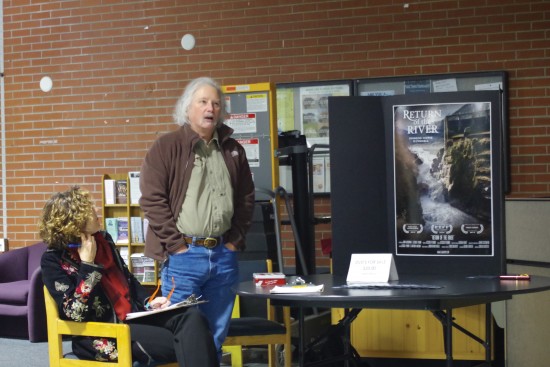
Panel participant Kim Sager-Fradkin, a researcher with the Lower Elwha Klallam Tribe from Port Angeles, said there are lots of new species in the river watershed. She said there an increased activity in river otters and birds called river dippers were found and that they were “accessing salmon resources.”
Also participating, George Pess, a researcher with the National Oceanic and Atmospheric Administration from Seattle, also part of the panel, said there were about a thousand salmon redds (spawning nests) in the upper river last year. He said that while the population analysis is not yet complete, estimates are that comparing 2014 river salmon levels to 2012, chinooks increased to 4000 from 2500, steelheads increased to 1200 from 250, sockeyes had an undefined increase, while a change in level for cohos, chums and pinks was unknown. He said the recent drought had been stressful on the fish but that nonetheless there were areas, especially inlets that served as thermal refuges for the fish in the summer.
Panelist Josh Chenoweth, a researcher and botanist with the Olympic National Park from Port Angeles, said rushes or juncus’ were the plants that took over most quickly and that there has been a high mortality rate from 2014 to 2015 due to the drought. Among his revegetation team’s findings was that deciduous trees are spreading rapidly. According to an abstract on revegetation, “Vegetation management will continue to focus on revegetating coarse sediment terraces and controlling exotic plant populations.”
Guy Gelfenbaum, a researcher with the U.S. Geological Survey from Santa Cruz, California, said that about 60% of the sediment has flushed from in-between the dams. And that the rest will take a lot longer. He said the sediment has extended the mouth of the river by about four football fields. He said the sediment accumulation at the mouth would be reduced in the future once the river is in balance. He also noted that the east side of the river mouth is still undergoing erosion.
Panel moderator Jeff Duda, a researcher with the U.S. Geological Survey and Western Fisheries Research Center of Seattle, said that while most dams tend to have a quick drop in available statistics after their removal, the research group’s intent is to prolong Elwha research as long as possible.
Brian Winter, a researcher with the National Park Service and Elwha River Restoration project manager from Port Angeles, encouraged people hiking up the Elwha to check out the ex-floodplains and the former dam sites where parts of the dams can be seen as a remembrance. He said to go to Altair bridge to see river otters. He also encouraged people to stay on trails giving young plants a better survival chance.

